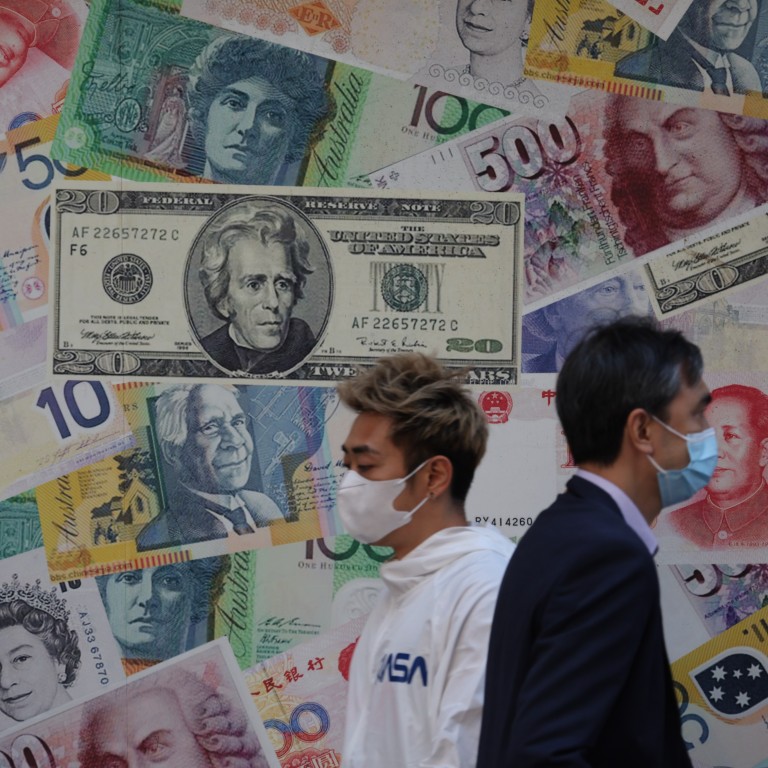
Hong Kong’s liquidity dwindles to 15-year low, putting pressure on banks to raise interest rates to stem booming carry trade
- The Wednesday intervention will bring the aggregate balance below HK$50 billion threshold to HK$49.23 billion, the lowest since 2008
- The low balance reflects low liquidity in the banking sector and may mean Hong Kong commercial banks have to increase their prime rate in May, trader says
The cash in Hong Kong’s banking system shrank to a 15-year low after the city’s monetary authority intervened to strengthen a weakening currency amid a yawning rate gap with the United States, adding pressure on commercial banks to raise their cost of funds.
Dwindling cash in Hong Kong’s banking system puts pressure on commercial banks to offer higher rates to attract deposits, putting them on the path to raise their prime rates on May 4 when the US Federal Reserve and the HKMA are scheduled for their next monetary policy adjustment, said Jasper Lo, an independent currency analyst.
“It has been a long time since the aggregate balance has dropped below the HK$50 billion level,” Lo said, adding that Hong Kong banks may raise their best lending rates by at least 12.5 basis points next month. “It shows that banking liquidity has dried up, which adds pressure on commercial banks to increase their prime rates.”
The HKMA’s aggregate balance fell to HK$31 billion in October 2008 during the global financial crisis. Global central banks led by the US Federal Reserve unleashed trillions of dollars of liquidity since, and kept the cost of funds at zero for more than a decade to bolster the global financial system and economies.
Hong Kong’s monetary policy has been run in lockstep with the Fed since 1983 to maintain the local currency’s peg to the US dollar. A trading band of between 7.7500 and 7.8500 was added in 2005, requiring the HKMA to step into the currency market every time the local currency strengthens or weakens beyond the range.
This is the main culprit behind the Hong Kong dollar’s slump
Hong Kong’s currency has weakened against the US dollar in recent due to the so-called carry trade, where arbitrageurs borrow at low rates to invest in higher-rate markets to pocket the difference. Every time a carry trader sells the Hong Kong dollar, it drives the local currency towards the weaker end of the trading band.
The arbitrage is booming, as the gap between Hong Kong’s rates and the US benchmark has widened to 200 basis points this month, from 140 pips last month and near parity in November.
Hong Kong’s one-month interbank offered rate (Hibor) was recently quoted at 2.8 per cent, compared with 3 per cent last month. One-month libor – the London interbank offered rate, used as the US benchmark – has risen to 4.9 per cent, from 4 per cent in November.
Still ‘boring’ after 36 years: Hong Kong dollar marks peg anniversary
The HKMA has already bought HK$46.87 billion to support the local currency this year. It spent HK$242.08 billion in 41 interventions last year.
The HKMA’s aggregate balance stayed at the peak of HK$457 billion most of the time in 2021 during the Covid-19 pandemic when the world’s central banks kept interest rates at zero to boost the global economy.
Hong Kong’s banks kept their prime rates unchanged in February and March, even as the Fed and the HKMA raised their base rates by a combined 50 basis points.
The expectation on the Fed’s next rate move has turned dovish, with 85 per cent of traders expecting a 25-basis point hike on May 4, according to the CME Fed Funds futures trading data. Last month, the expectation was evenly split between 25 pips and no change.
The Fed has raised interest rates by a quarter point each in February and March after seven increases last year to crack down on high inflation. These moves have added 4.75 percentage points to the benchmark since March 2022 when the US central bank embarked on its latest rate rise campaign. This was more aggressive than the aggregate increase of 2.25 percentage points made during the last rate rise cycle between 2015 and 2018.

